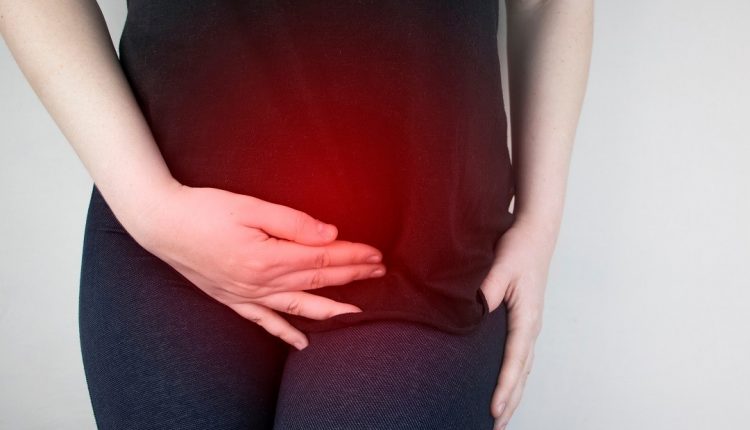
Dysmenorrhoea: definition and how to treat it
Let’s talk about dysmenorrhoea: every woman of childbearing age has experienced an episode of painful menstruation at least once in her life
In fact, it is not uncommon for the onset of menstruation to be accompanied by symptoms such as back pain, stomach ache, painful twinges, kidney pain, headaches and mood swings.
However, when the pain associated with menstruation is particularly intense, we speak of dysmenorrhoea.
What is dysmenorrhoea?
Dysmenorrhoea is understood to be all those pains that are closely related to the menstrual cycle, especially when they are severe.
Those who suffer from dysmenorrhoea complain of painful twinges in the lower abdomen, back cramps, pain in the thighs, and other symptoms that severely debilitate the woman and affect the normal flow of daily life.
Who suffers from dysmenorrhoea?
All women can suffer from dysmenorrhoea, but it has been noted that it is young women and girls who experience the most severe symptoms.
Indeed, many women are forced to absent themselves from school or work because the pain is too intense to bear.
When this occurs in adulthood, however, without having suffered from it at a young age, it is a good idea to go immediately to your gynaecologist to report it.
Dysmenorrhoea is sometimes related to pathologies, infertility, tumour formations or extrauterine pregnancies.
The most common symptoms of dysmenorrhoea
Dysmenorrhoea should be differentiated from the canonical pains associated with the menstrual cycle.
The perception of pain is in fact very intense, cramp-like or characterised by colic-like twinges, especially in the lower abdomen.
This pain may extend to the entire back and kidney fascia, correlated with various symptoms such as dizziness, cold sweating, nausea, vomiting, and even diarrhoea.
Headaches are also a very common symptom, which can occur as early as the pre-menstrual phase and worsen in rather anxious individuals.
How long does the pain associated with dysmenorrhoea last?
Usually, dysmenorrhoea episodes are closely linked to the duration of menstruation.
They may occur a few days before the arrival of the menstrual cycle and last for two or three days.
It is good to know that the painful episodes diminish significantly with the passage of time and years, and then disappear almost completely around menopause or after the first pregnancy.
The causes of dysmenorrhoea
Unfortunately, dysmenorrhoea is not always linked to specific diseases or causes, and can indeed be experienced by every woman.
If it is physiological, i.e. not attributable to any specific disease, we speak of primary dysmenorrhoea.
Secondary dysmenorrhoea, on the other hand, is related to certain diseases such as endometriosis, uterine infections, fibroids, adenomyosis or stenosis of the cervix.
Certain forms of cancer can also affect the presence of dysmenorrhoea, or intrauterine adhesions.
To ascertain whether or not you have a disease, you will need to visit your gynaecologist and undergo a gynaecological examination, transvaginal ultrasound, hysteroscopy or hysterosalpingography.
Depending on the doctor’s clinical suspicion, it is also possible to undergo an MRI or laparoscopy.
If pain is accompanied by fever, it would be advisable to contact your doctor immediately to rule out more serious infectious diseases, such as peritonitis.
Medications for dysmenorrhoea
Dysmenorrhoea is usually treated with common painkillers and non-steroidal anti-inflammatory drugs, to be taken only on days when the pain is most intense.
Taking the oestrogen-progestin pill and contraceptive drugs is also an incredibly effective remedy against pain if one is not planning a pregnancy.
By blocking ovulation, uterine spasms and the resulting pain are significantly reduced.
Natural remedies against pain
In cases where taking medical therapy for pain is contraindicated due to allergies or other illnesses, one can find relief by taking magnesium already in the pre-menstrual period.
Phytotherapeutic products are also available in pharmacies that are intended to calm and relieve states of tension and anxiety caused by pain.
It has been scientifically proven that good physical activity and a healthy dietary lifestyle can also affect pain.
Quitting smoking can also help a great deal if you suffer from primary dysmenorrhoea.
Read Also
Emergency Live Even More…Live: Download The New Free App Of Your Newspaper For IOS And Android
Vulvar Pain: Symptoms, Diagnosis, Treatment And Prevention
Vaginal Candida, Symptoms And How To Treat It
Vaginal Candida: Causes, Symptoms And Prevention
Candida: Definition, Symptoms, Diagnosis And Treatment Of Vaginal Infection
Colposcopy: How To Prepare, How It Is Performed, When It Is Important
Cystitis: Symptoms, Causes And Remedies
Cystitis, Antibiotics Are Not Always Necessary: We Discover Non-Antibiotic Prophylaxis
Polycystic Ovary Syndrome: Signs, Symptoms And Treatment
Female Cystitis, How To Deal With It: Urological Perspectives
How Does Cystitis Manifest Itself?
Cervical Cancer: The Importance Of Prevention
Vulvodynia: What Are The Symptoms And How To Treat It
What Is Vulvodynia? Symptoms, Diagnosis And Treatment: Talk To The Expert
Accumulation Of Fluid In The Peritoneal Cavity: Possible Causes And Symptoms Of Ascites
What’s Causing Your Abdominal Pain And How To Treat It
Pelvic Varicocele: What It Is And How To Recognise The Symptoms
Can Endometriosis Cause Infertility?
Transvaginal Ultrasound: How It Works And Why It Is Important
Candida Albicans And Other Forms Of Vaginitis: Symptoms, Causes And Treatment
What Is Vulvovaginitis? Symptoms, Diagnosis And Treatment
Urinary Tract Infections: Symptoms And Diagnosis Of Cystitis
Cervical Cancer Screening, THINPrep And Pap Test: What Is The Difference?
Diagnostic And Operative Hysteroscopy: When Is It Necessary?
Techniques And Instruments For Performing Hysteroscopy
The Use Of Outpatient Hysteroscopy For Early Diagnosis
Utero-Vaginal Prolapse: What Is The Indicated Treatment?
Pelvic Floor Dysfunction: What It Is And How To Treat It
Pelvic Floor Dysfunction: Risk Factors
Salpingitis: Causes And Complications Of This Fallopian Tube Inflammation
Hysterosalpingography: Preparation And Usefulness Of The Examination
Gynaecological Cancers: What To Know To Prevent Them
Infections Of The Bladder Mucosa: Cystitis
Colposcopy: The Test Of The Vagina And Cervix
Colposcopy: What It Is And What It Is For
Vaginal Candida: Symptoms, Cause And Treatment



